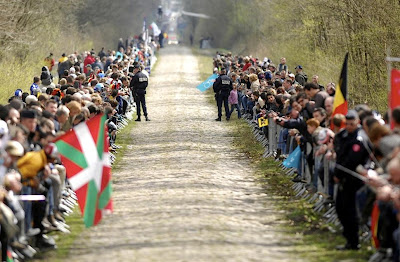I had initially purchased a Trek 1.5 because it was fairly inexpensive and had similar riding characteristics to the Cannondale. Don’t get me wrong, I really like the Trek, and it has been a wonderful everyday ride, but when the driver-at-fault weasled out of replacing my bicycle like she said she would, and I received a small amount of compensation from her insurance company, it was pretty much all I could afford. It would take some time and patience to save up for my first choice.
A couple years of putting aside a little money every week, and plenty of selling on eBay, netted the funds needed, so I kept a lookout for several months for something special to come available online. I don’t know if this particular seller was desperate for cash, but I saw a listing for a used Colnago frame that was built-up with nearly new, top-end components. After I researched all of the parts for reviews, as well as value, I realized the bicycle was worth between $3000-4000 dollars, and when the seller was receptive to my $1275, I quickly snapped up the bike.
I have received tons of comments about the cool paint job on the Colnago Dream Lux I purchased (see left photo), and it was the kind of lightweight bike that just felt fast when you flicked the pedals. I enjoyed the butter-smooth Campagnolo shifting, but the range of gears didn’t provide a comfortable climbing experience around the hilly Schuylkill Valley. I changed out the huge chainrings that I felt were more suited to criterium (short course) racing, and, allthough I wouldn’t consider the results perfect, I left my Trek hooked up to the windtrainer on the third floor of the house while I used the Colnago exclusively on rides during all those surprisingly mild days we had this winter. I’m still shocked to go back in my Map My Ride.com records to see I did a 35 mile ride three days before Christmas!
If you’ve been a regular reader, you heard about my recent Pinarello purchase, and I absolutely love it! The gearing is so close to the "climbing comfort" level I have on the Trek, yet so much lighter, that I use it on all but the most challenging routes. At this point, a little voice in my head kept saying, “Traitor, you’re a COLNAGO guy – now what’ll you do?” I don’t consider myself a collector, and I needed something besides another expensive lightweight bicycle hanging around the rafters.
When I originally planned a Colnago purchase, I had considered buying a vintage frame to gradually build up with new parts as funds became available. My thinking changed when presented with the incredible price on the Dream Lux, but now I had an opportunity to go back to that plan. Because I would be selling my current Colnago, the guilt of spending additional cash would not be a factor. I attempted selling the complete bicycle a couple times over the last month, but with no luck. This time of year is usually the ideal time for bike sales, and it may have just been odd timing. Looking among the other listings I found a couple similar bicycles, which definitely would have influenced interest in my auction. Another factor may have been prospective bidders being turned off by all the individual components, perhaps wanting to choose their own or, more likely, having a complete matching gruppo, as mechanics call a set of components.
Contemplating this whole proposal before listing one more time, I decided to disassemble the bike and simply change to a vintage frame, that way eliminating the search I would have to undertake for all of the parts to build it back up. I’m seeing this as an opportunity to find a real classic Colnago from the era in which I first fell in love with the sport, while giving the bicycle a level of modern performance. More to come…









